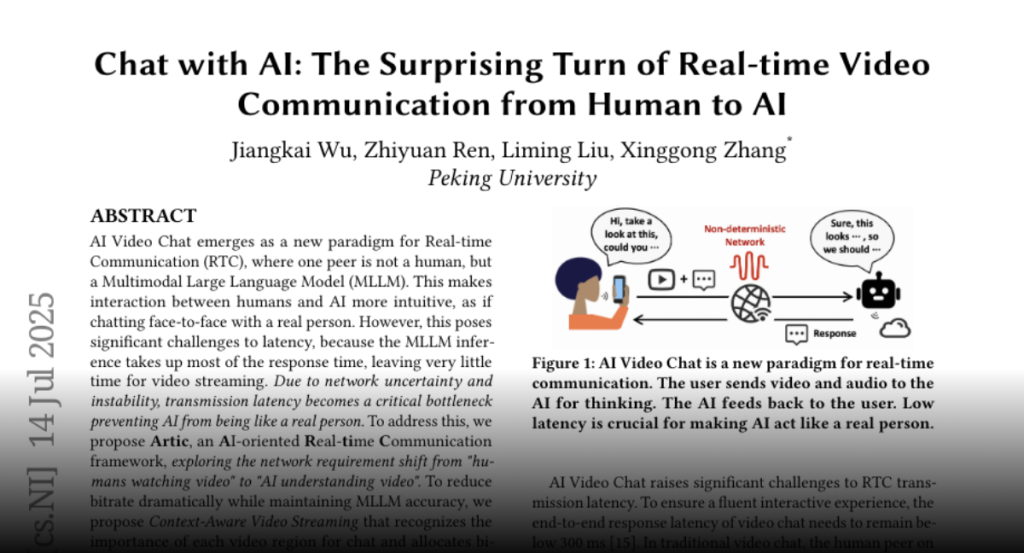AI Video Chat emerges as a new paradigm for Real-time Communication (RTC), where one peer is not a human, but a Multimodal Large Language Model (MLLM). This makes interaction between humans and AI more intuitive, as if chatting face-to-face with a real person. However, this poses significant challenges to latency, because the MLLM inference takes up most of the response time, leaving very little time for video streaming. Due to network uncertainty and instability, transmission latency becomes a critical bottleneck preventing AI from being like a real person. To address this, we propose Artic, an AI-oriented Real-time Communication framework, exploring the network requirement shift from “humans watching video” to “AI understanding video”. To reduce bitrate dramatically while maintaining MLLM accuracy, we propose Context-Aware Video Streaming that recognizes the importance of each video region for chat and allocates bitrate almost exclusively to chat-important regions. To avoid packet retransmission, we propose Loss-Resilient Adaptive Frame Rate that leverages previous frames to substitute for lost/delayed frames while avoiding bitrate waste. To evaluate the impact of video streaming quality on MLLM accuracy, we build the first benchmark, named Degraded Video Understanding Benchmark (DeViBench). Finally, we discuss some open questions and ongoing solutions for AI Video Chat.

